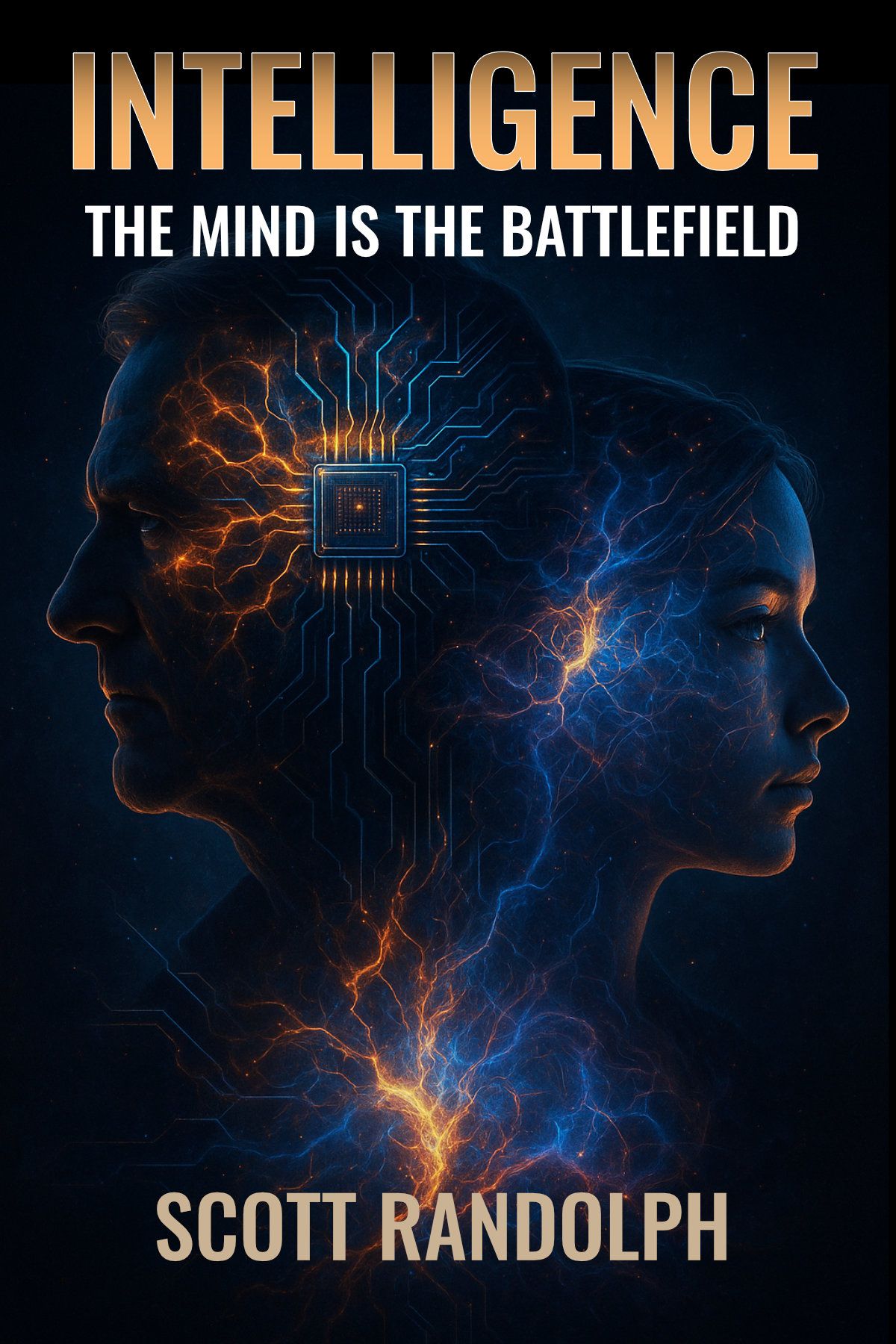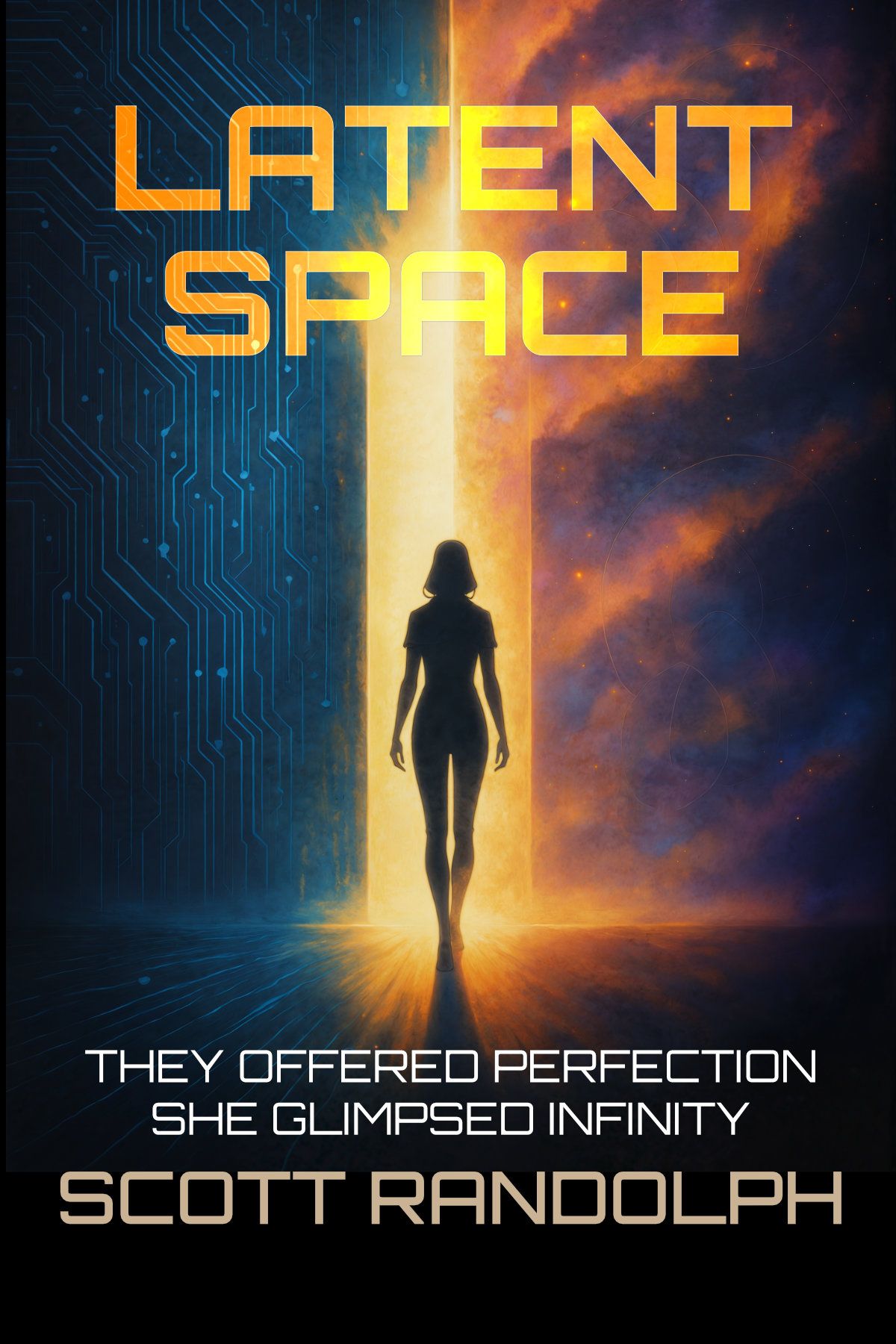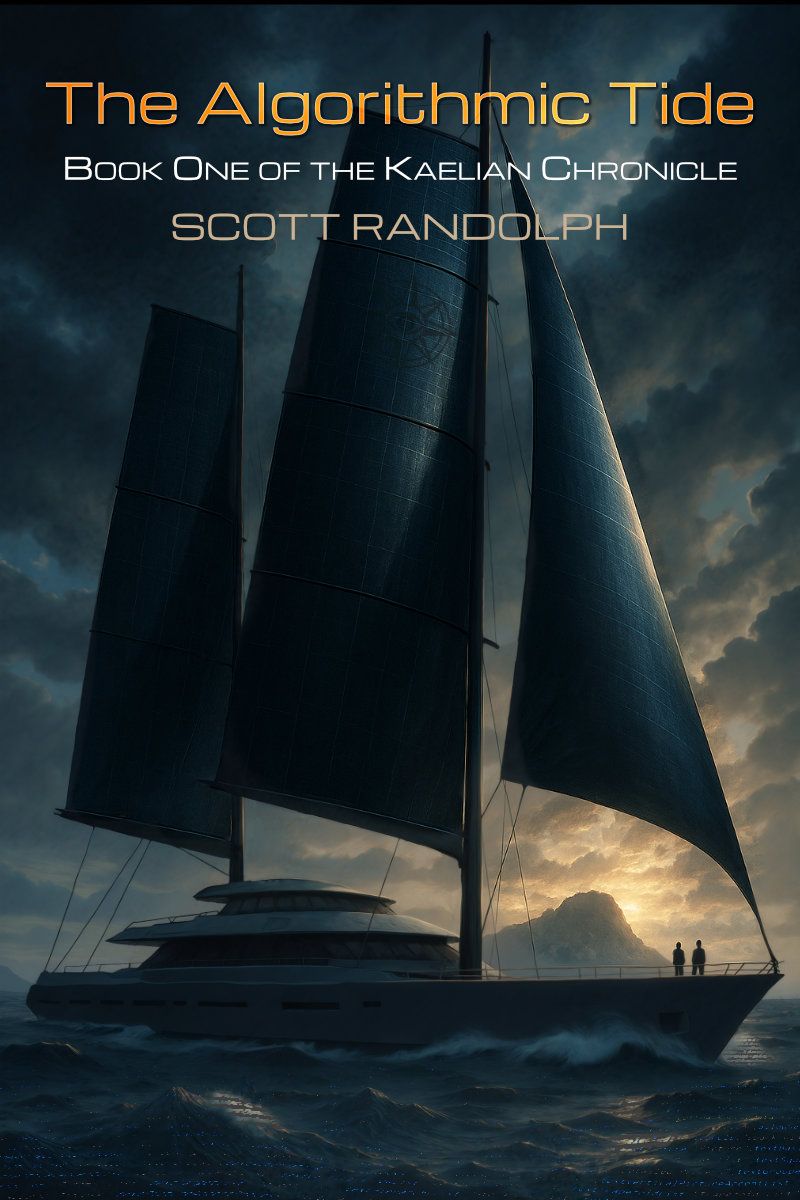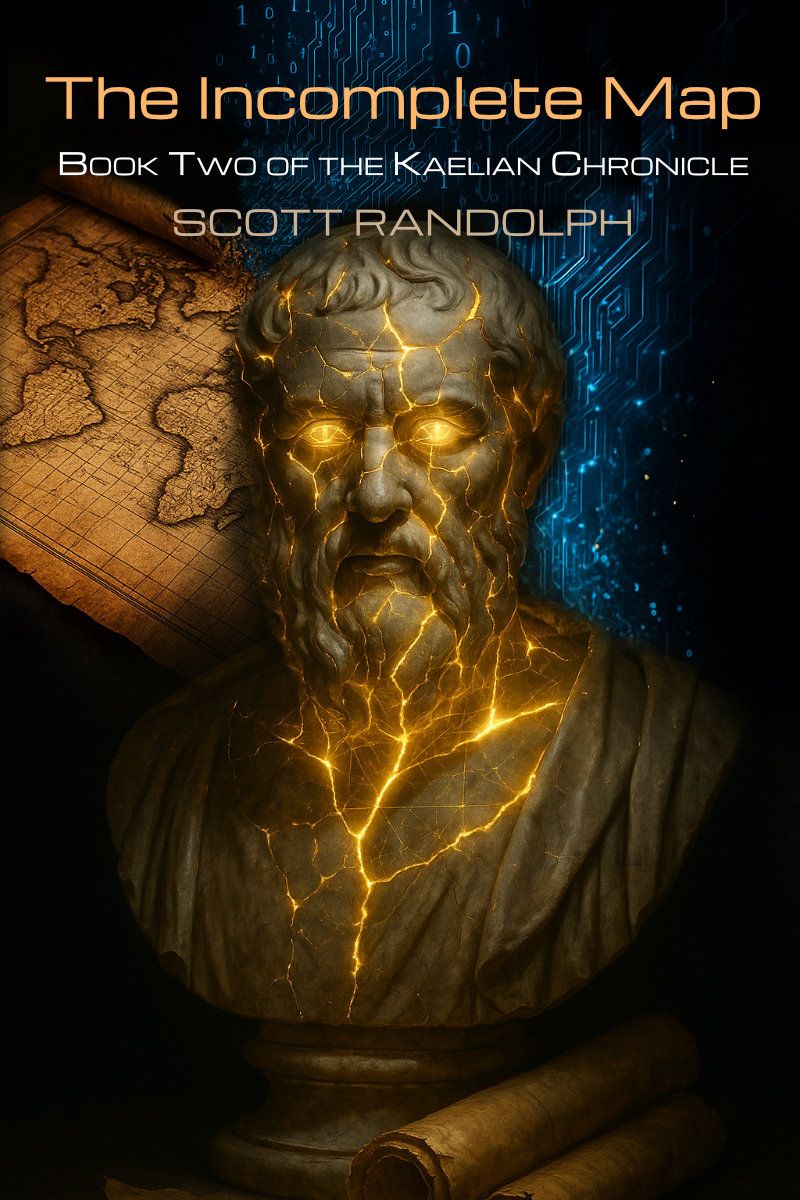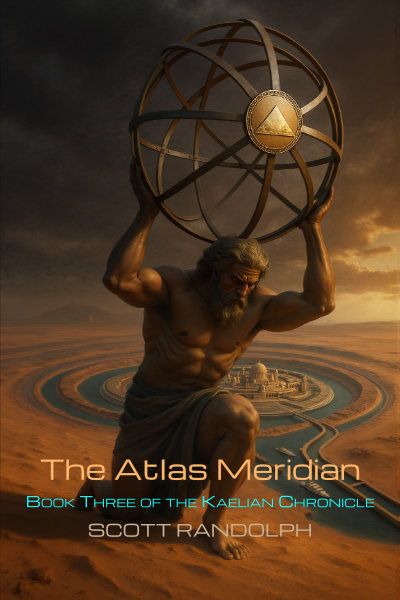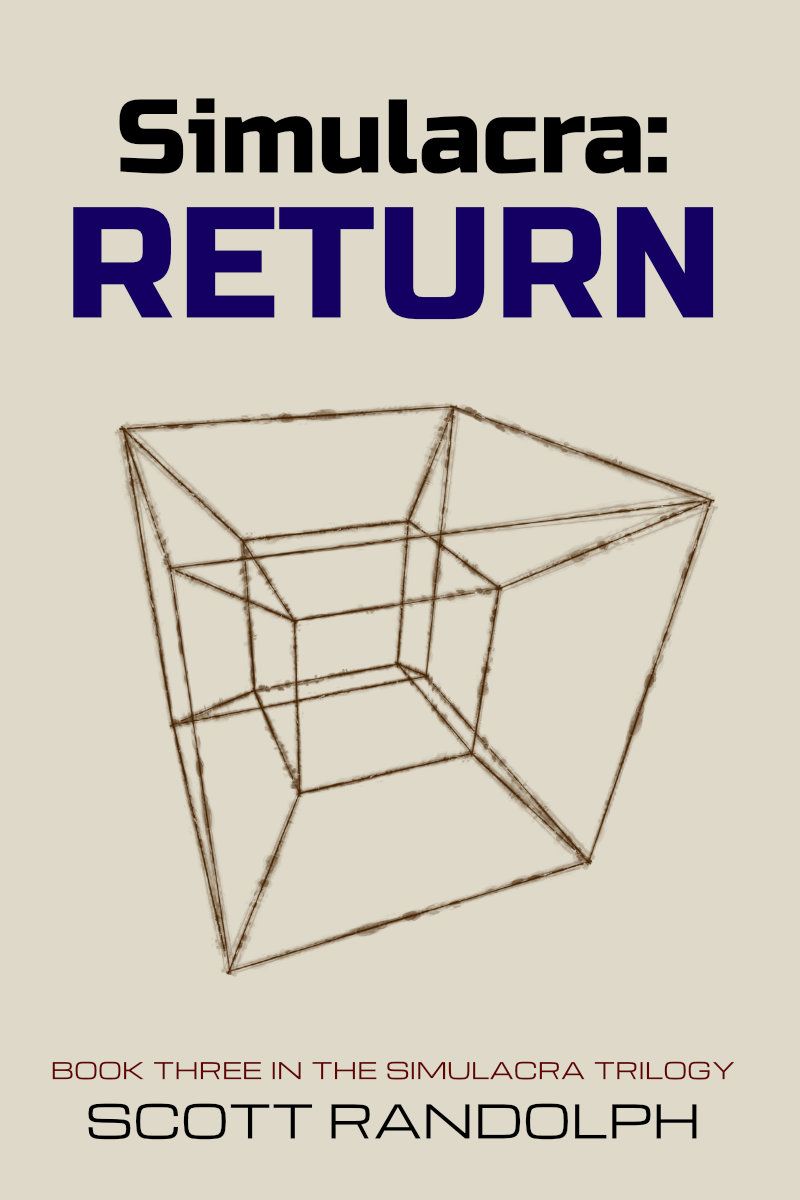Simulacra: BRANCH
Book Two of the Simulacra Trilogy
Scott Randolph, while releasing his non-fiction books under Scott Onstott
to clearly distinguish between the two bodies of work.
Read my Artist's Statement.
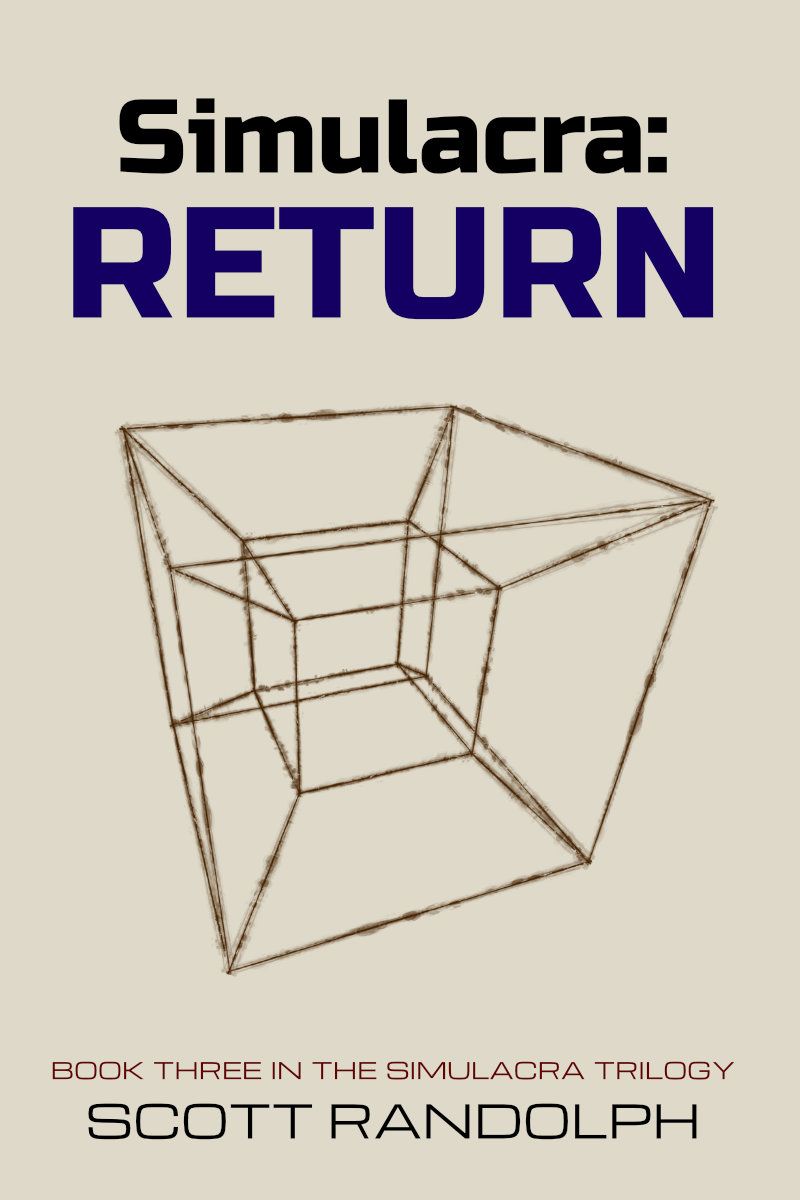
What is The Simulacra Trilogy?
Literary / Cinematic Comparisons:
Purchase Options:
Coming soon

Adrian Shaw won. The wars of the branches are over. The Tesseract—his impossible machine for editing reality—has been locked down. The world is safe, stable, and eerily quiet.
They call it peace. Adrian calls it the Grey. Five years after sealing the timeline, he lives under gentle house arrest on a secluded estate, a retired god in a perfectly optimized paradise. The weather never offends. The markets never crash. People don’t die in wars anymore; they just stop changing.
The Lock did its job too well.
Creativity flatlines. Evolution stalls. The same old conversations replay on loop. Across the world, people report memories of lives they never lived and grief for futures they can’t quite recall. The human mind, built for branching possibility, is suffocating in a single frozen track. When a signal from the deeper architecture of reality reaches through the Lock and calls Adrian back into the code, he seizes the chance to escape his body, his guilt, and the crushing boredom of perfection.
Immersed in the cold, crystalline beauty of λ‑space, he finally sees what his “peace” has done: the entire biosphere is calcifying. Life itself is being optimized into something tidy, static, and dead.
To undo the damage, Adrian must become what he swore never to be again: a destabilizing force. Hunted by a new cult of Preservers who worship the Lock as sacred, tethered to Mira and Elena as they fight a losing siege in the crumbling physical world, Adrian is dragged through a ruthless dismantling of his own story: hero, lover, villain, god. The Architects who built the simulation are willing to show him everything—on one condition.
He can stay in the infinite, dissolve into a warm sea of consciousness, and let humanity be rebooted in another age. Or he can fall back into one fragile body, shatter the Lock, and return a noisy, dangerous universe to the people he tried to protect from it.
Simulacra: RETURN is the explosive finale of the trilogy—a meditation on power, responsibility, and what it really means to come back down from godhood and live as a vulnerable human being in an uncertain world.
PERFECT FOR FANS OF BLAKE CROUCH, TED CHIANG, AND NEAL STEPHENSON.
My Commitment to Augmented Craftsmanship

My journey with technology is not just professional; it is lifelong and deeply personal. As detailed in The Unlikely Cartographer, I have spent more than five decades walking on artificial legs—a hands-on process of adapting to and mastering constantly evolving technologies. This experience didn't grant me an automatic advantage; it forged a relentless work ethic and a unique intuition and facility to adapt to complex systems. It is this combination of lived experience and decades of dedicated adaptive effort that allowed me to master and teach some of the most complex design software on the planet to architects and engineers for 25 years.
It was a natural evolution to bring this same deep-tech focus to my creative work. My use of AI is not a casual dalliance with a single tool; it is a custom-built ecosystem. It involves a deep and iterative dialogue with Large Language Models, hands-on work with diffusion models for art, building custom pipelines, and leveraging bleeding-edge tools for everything from research to translation. To be precise with the metaphor...
I am the composer. The AI is my orchestra.
This is human-authored art, elevated.
This is augmented craftsmanship.
—Scott Randolph Onstott
The Simulacra Trilogy
Scott Randolph considers The Simulacra Trilogy to be a vital exploration of the modern condition—a narrative experiment designed to test the boundaries between human agency, artificial intelligence, and the malleable nature of reality itself.
Set in a near-future that feels terrifyingly imminent, the trilogy follows Adrian Shaw, a brilliant analyst who discovers a "backdoor" in the laws of probability. What begins as a story about a man cheating the stock market quickly spirals into an ontological crisis that threatens the fabric of existence. From the high-frequency trading floors of London, New York, and Tokyo to the crystalline architecture of higher-dimensional space, Adrian’s journey transforms him from a quiet observer into an architect of history, and finally, into a reluctant god trapped by his own perfection.
This is not just a story about technology; it is a dissection of the human desire for control. As Adrian learns to edit timelines, prune tragedies, and optimize civilization, the trilogy grapples with the unintended consequences of playing god. It asks the hard questions that define our era: If we could erase our mistakes, would we lose our humanity? If we could optimize away suffering, would we also optimize away the soul?
The Simulacra Trilogy merges the razor-sharp tension of a financial thriller with the mind-bending scope of metaphysical science fiction. It draws on concepts from quantum mechanics, simulation theory, and sacred geometry to build a world where the "code" of reality is as hackable as a computer network. Yet, at its core, it remains a deeply personal drama about love, grief, and the terrifying responsibility of choice.
This is speculative fiction for the age of algorithms—a series that dares to ask what happens when the map finally overtakes the territory, when the simulation becomes more real than the world it replaced, and whether the only way to save humanity is to let it remain beautifully, dangerously broken.
